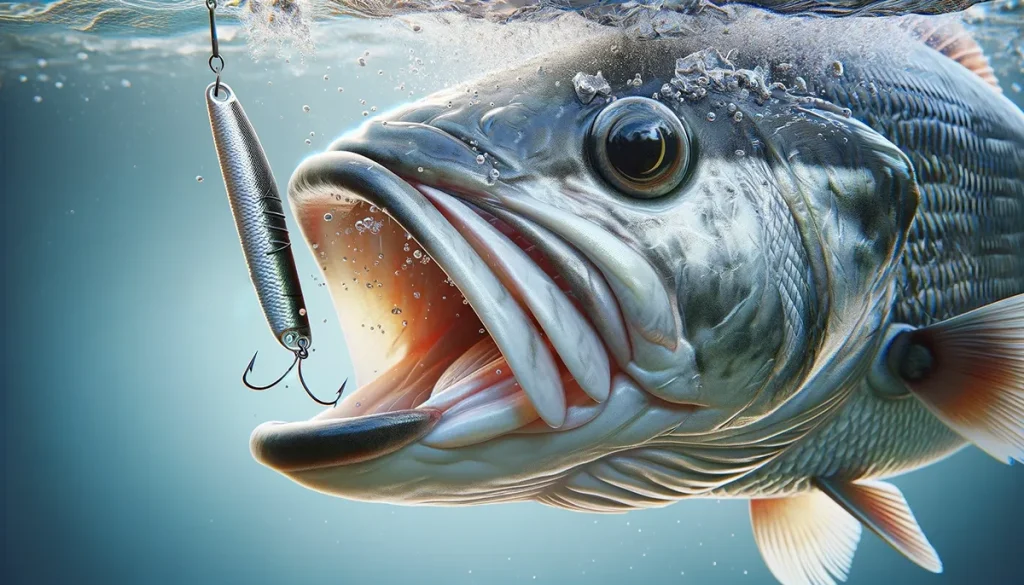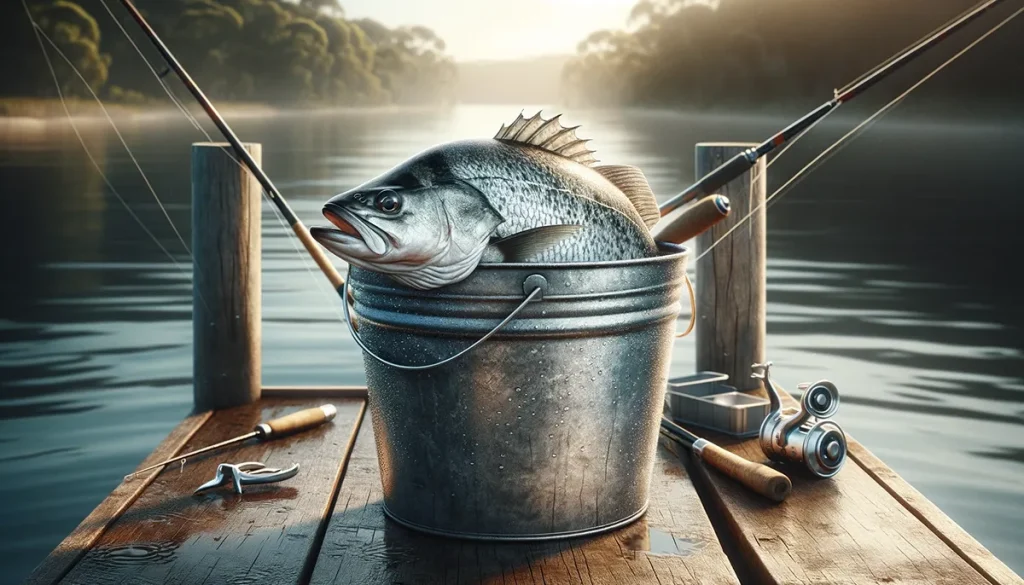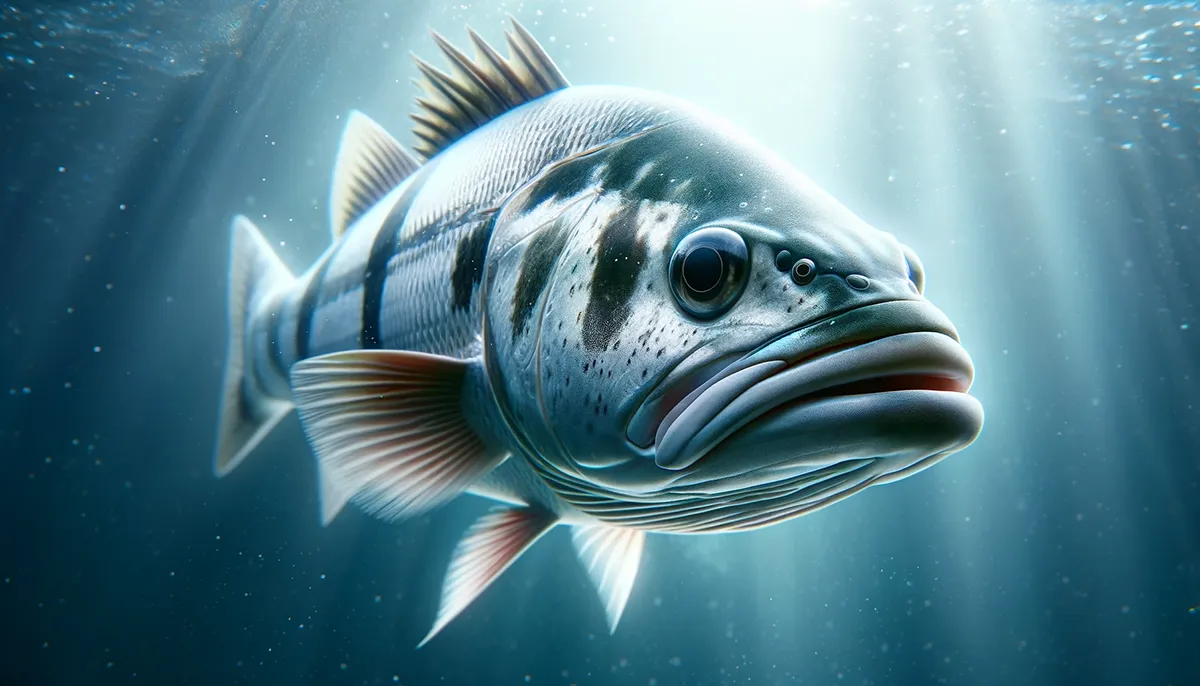G’day, mates! Have you ever dreamed of fishing for Barramundi? It’s not just fishing; it’s an adventure that’ll have you hooked from the get-go! Barramundi, or Barra as we fondly call them, are one of Australia’s most iconic fish. They’re not only cunning and elusive, but catching one is a rite of passage for any angler down under. The thrill of the chase and the pure joy when you finally land one of these beauties is unbeatable.
But, let me tell you, catching a Barra isn’t just about luck; it’s about skill, patience, and, most importantly, having the right gear. And that’s where Barramundi lures come into play. You need lures that can entice these clever critters, making them think they’ve found their next meal.
And hey, while we’re on the topic of the best gear, have a squiz at our ReelBoss fishing lines. Over at ReelBoss, we’ve got the top-notch gear that might just make the difference between a yarn about the one that got away and a legendary catch you’ll brag about for years. So, ready to tackle the challenge of Barramundi fishing? Let’s get into it!

Understanding Barramundi
Alrighty, let’s dive a bit deeper into understanding the Barramundi. This fish species is not just any old catch; it’s a true blue Aussie icon. Barras are famous for their fighting spirit and the sheer excitement they bring to the fishing game. But what’s really fascinating is their growth rates. These fish can grow to be real whoppers, making them a prized catch for any angler worth their salt.
Now, if you’re keen on finding where these beauties like to hang out, you’ll want to head to the weed beds. Barras love these areas because they’re chockers with smaller fish and provide perfect ambush spots. Understanding their habitat is crucial for any fish looking to land a big one. The weed beds in rivers, estuaries, and coastal areas are where you’ll often find these cunning fish lurking, waiting for their next feed. So, when you’re out there, keep an eye on these spots; it could lead you to your next big Barra catch!
Types of Barramundi Lures
Now that we’ve got a bit of a handle on the Barramundi’s backyard, let’s talk about the tools of the trade – fishing lures. When it comes to Barra fishing, the right lure can make all the difference between a story about the one that got away and a legendary catch. There’s a whole arsenal to choose from, but let’s zero in on the top picks: soft plastics, surface lures, and hard body lures.
Soft Plastics
Soft plastics are the go-to for many Barra hunters. They’re versatile and can mimic the look and movement of live bait to a tee. Whether it’s a prawn, fish, or frog imitation, these lures can be rigged to suit all sorts of conditions and depths. Perfect for flicking around those weed beds where Barras love to hide.
Surface Lures
Next up, we’ve got surface lures. These bad boys are all about the thrill of the chase. Watching a Barra launch out of the water to smash a surface lure is something that gets the heart racing. They’re ideal during dawn and dusk when Barras are on the prowl for a feed.
Hard Body Lures
Hard-body lures are the sturdy mates in your tackle box. Designed to dive deep, they’re great for trolling over reefs and around big structures. With their vibrant colors and rattling sounds, they can attract the attention of even the most stubborn Barra.
Each type of lure has its moment to shine in Barra fishing. It’s all about matching the lure to the conditions and what the Barramundi are feeding on. So, having a mix of these in your tackle box is a good bet for a successful day out on the water.
Best Lure for Barramundi
Choosing the best lure for Barramundi isn’t just about picking the flashiest one from your tackle box. It’s about understanding the Barra’s mood, the environment, and what they’re keen on munching. Barra lures come in all shapes and sizes, each with its own time and place.
When we’re talking about the best Barra lures, it boils down to the conditions. On a calm, clear day, a well-placed surface lure might be the go, getting those big fellas to leap right out of the water. But if it’s a bit murky, those soft plastics or hard body lures, getting down into the depths where the Barras are lurking, might be your best bet.
The real trick is to keep a keen eye on the water and the weather. A lure that’s the duck’s nuts in the early morn might not stir a nibble come arvo. So, having a variety of Barra lures on hand and knowing when to use ’em is key to landing that trophy Barra. It’s all about reading the signs and matching your lure to what the Barras are after.

Barramundi Soft Plastics
Diving into the world of Barramundi soft plastics, these little beauties are a must-have for any serious Barra angler. The versatility of soft plastics means you can mimic just about any tucker a Barra might fancy, from prawns scooting through the water to small baitfish hiding in the weed beds.
Getting your rig right with Barramundi soft plastics is a bit of an art form. It’s all about making that lure look as lively and irresistible as possible. In those snaggy weed beds, where Barras love to ambush their prey, you’ll want to rig your plastics weedless. This setup helps your lure glide through the green without getting caught up, making it easier for the Barra to take a bite.
Presentation is key. A slow, steady retrieve with occasional twitches can mimic a wounded baitfish perfectly, driving those Barras wild. Remember, it’s not just about throwing your line in and hoping for the best; it’s about crafting that perfect presentation that’ll make any Barra think it’s stumbled upon its next meal.
Tips for Using Surface Lures
While we’ve been chatting about the ins and outs of catching Barramundi with all sorts of lures, there’s something uniquely thrilling about using surface lures. This method brings Barra fishing to a whole new level of excitement. There’s nothing quite like the adrenaline rush of seeing a massive Barra explode out of the water, attacking your lure on the surface.
To master the art of surface lures in Barra fishing, timing and technique are key. Dawn and dusk are your golden hours when Barras are most actively hunting. It’s all about the presentation—making your lure dance across the water’s surface, mimicking an injured baitfish or bug. The trick is in the twitch; a subtle flick of the wrist can make all the difference, breathing life into your lure.
This topwater action is not just effective; it’s a spectacle. The anticipation, the visual explosion of water, and the sheer force of a Barra hitting your lure—it’s what fishing dreams are made of. So, when you’re out there on the water, give surface lures a go. The thrill of catching Barramundi this way is something every angler should experience.
Maximizing Your Catch
Switching gears a bit from the thrilling topwater action of Barra fishing with surface lures, let’s chat about maximizing your catch. Using the right Barramundi lures is just part of the equation. To really up your game, understanding Barramundi’s growth rates and behavior is crucial.
Barras are fascinating critters. Their growth rates can be phenomenal, with juveniles bulking up to reach trophy sizes in no time. This rapid growth impacts their feeding habits and the types of lures they’re likely to go for. Smaller, younger Barras might be more tempted by smaller Barramundi lures mimicking the baitfish they chase, while the big old monsters might go for something a bit more substantial.
Adapting your strategy based on the Barramundi’s life stage can significantly increase your success rates. It’s about matching the hatch, so to speak. If you’re after the juveniles, focus on areas with plenty of cover and use lures that mimic their prey. For the larger, more mature Barras, target deeper waters and consider lures that offer a bigger meal. Remember, understanding their behavior and habitat preferences is key. Combine this knowledge with the right Barramundi lures, and you’re well on your way to a bumper catch.

Conclusion
Wrapping it all up, mates, the key to a successful Barra fishing trip lies in your choice of Barramundi lures. It’s not just about having a tackle box stuffed with lures; it’s about knowing which one to pull out at the right time. Each lure has its moment under the sun, depending on the conditions, the time of day, and what those cunning Barras are up to.
But here’s the thing, don’t just take my word for it. The real magic happens when you start experimenting with different lures yourself. Each trip on the water is a chance to learn something new, to tweak and refine your approach. You might find that a lure you’d never given much thought to becomes your secret weapon.
So, get out there and give it a burl. Mix it up with different Barramundi lures, and see what gets those Barras biting. Remember, Barra fishing is as much about the chase as it is about the catch. Here’s to tight lines and tall tales of the ones that didn’t get away!
